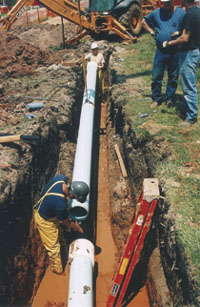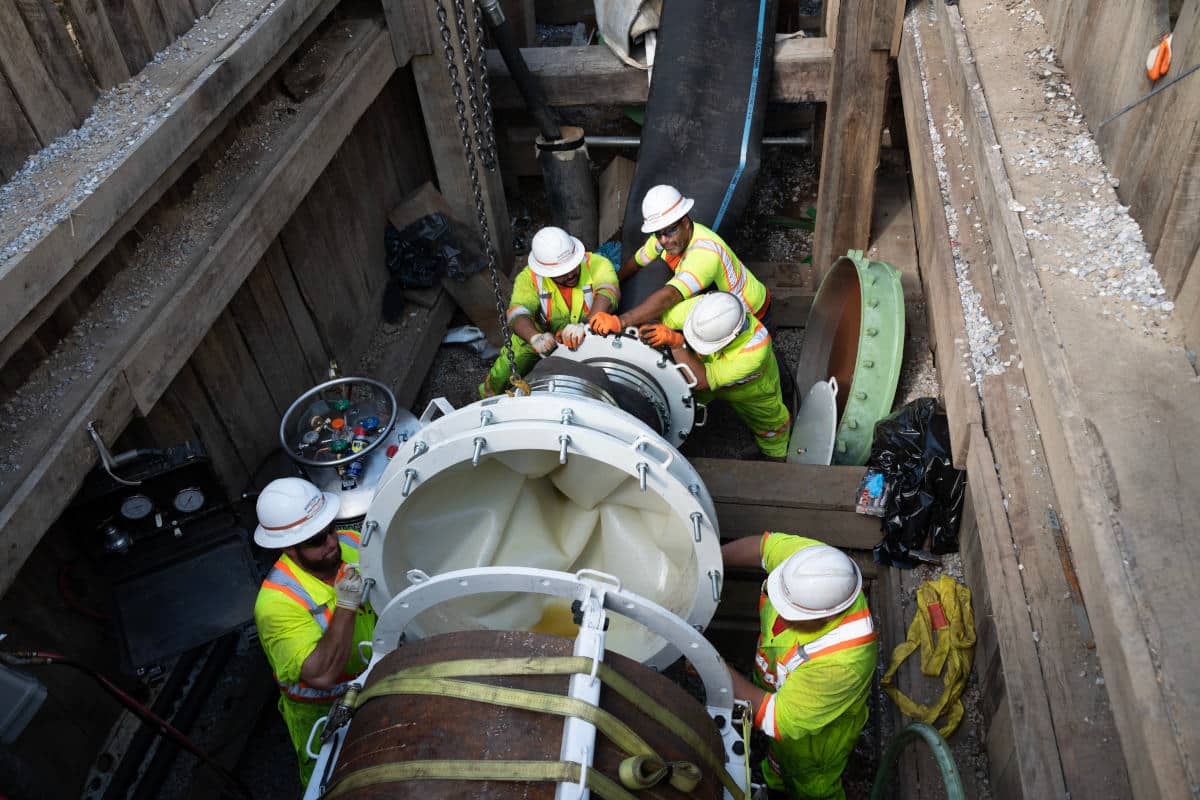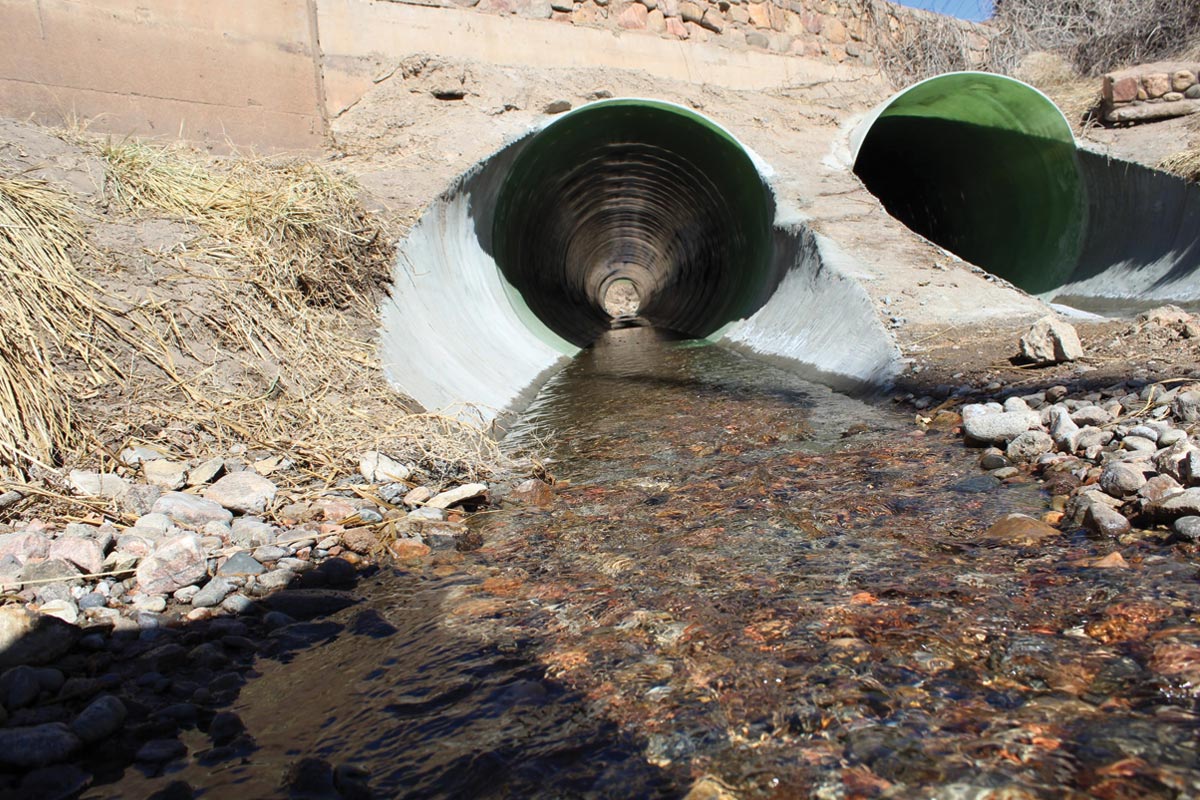HDD Used as Part of Chilled Water System Replacement in Missouri
 The year 2005 has been a big one for both celebrating the old and welcoming the new at Missouri State University. The university, located in Springfield, Mo., is in the midst of centennial celebrations and in August, dropped the longstanding “Southwest” from its name.
The year 2005 has been a big one for both celebrating the old and welcoming the new at Missouri State University. The university, located in Springfield, Mo., is in the midst of centennial celebrations and in August, dropped the longstanding “Southwest” from its name.
The university also decided that it was time to update its air conditioning system. University administration partnered with Johnson Controls to create a performance contract that would pay for mechanical upgrades within 15 years. Johnson Controls contracted St. Louis-based engineering and architecture firm Ross & Baruzzini to design a top-notch chilled water system to replace the aging individual air conditioners at 19 of the campus’ buildings.
“A lot of those air conditioners were old, outdated and inefficient,” saysRoss & Baruzzini director of mechanical engineering Stephen Duda, P.E.
The project called for 5,000 ft of pipe, which when installed, could makequite a mess on campus, forcing the disruption of foot traffic and removal ofbeautiful, tall oak trees. When university administrators met with JohnsonControls and Ross & Baruzzini, they made it clear they wanted as littledisruption as possible. The project’s engineers quickly assured them that usingthe trenchless method of horizontal directional drilling to install pipe was theway to go.
“They didn’t want their campus all torn up during their centennial ceremonies, while dignitaries were visiting,” Duda says. “They understood pretty quickly the benefits of the trenchless method. The whole campus would have been a mess with open-trench.”
Crews would also have to be careful not to disrupt the flow of students, faculty and visitors on campus. Though many of the school’s 19,000 students had left for the summer, Missouri State still hosted various sports camps and honors programs on campus during the summer.
Johnson Controls, a global company and industry leader in HVAC and controls, developed and proposed the performance contract. After being awarded the contract, Johnson Controls subcontracted the trenching and directional boring portion of the project to Springfield’s Connelly Plumbing. Connelly Plumbing then hired Hartman Construction, also of Springfield, to assist with the directional drilling — an area where Connelly’s experience was limited. With several previous projects installing pipe under the city’s major roads, Hartman had the experience needed.
“We had never done directional drilling, so it was a learning experience for us all the way around,” says Ken Moore, industrial division manager for Connelly Plumbing. “They were kind of like mentors to us. The City of Springfield has been changing its major intersections to help traffic flow, and Hartman has been the contractor that’s done most of those jobs. So, they have gained some valuable experience.”
In this particular chilled water system, water will be piped into six chiller plants at strategic locations across campus. From there, it will travel through coils and be cooled by refrigeration machines. After cooling to temperatures between 40 and 45 F, the water will travel through a piped loop system to 19 campus buildings. The system is controlled by a highly efficient Johnson Controls METASYS system. From a maintenance standpoint, it’s a vast improvement over the individual air conditioners the dated previous system included, says Jackson Waterbury, P.E., assistant director of mechanical engineering for Ross& Baruzzini.
“With this new system, if one chiller breaks down, we’re okay because we havefive others we can use,” he says. “You don’t have to send the maintenance crewaround to several different buildings. You just send someone to one of the sixbuildings where all the equipment is located.”
The chilled water system, driven by Johnson Controls and engineered by Ross& Baruzzini, will also prove more economical by saving the university anexpected $700,000 a year in utility bills, says Fred Travis, project manager forJohnson Controls.
HDD Used
In April, after overcoming afew initial difficulties with locating underground utilities, the two crewsbegan work, making seven pairs of parallel bores 14 ft below ground level,separated by 1 to 3 ft of dirt for insulation purposes. Each pair included abore for the water supply line and another for the water return line. Boresaveraged between 250 and 500 ft. With the region’s soil strata, drilling wassomewhat difficult, says Dean Hartman, owner of Hartman Construction.
“We were having to ream it three times,” he says. “In this part of Missouri,you go from soft clay to hard chert to solid limestone all in 100 ft.”
The crews used a Vermeer 5100 directional drill on the long runs and a Vermeer 2440 drill on shorter ones. The pipe used in the operation was 10-in.CertainTeed Certa-Lok C900/RJ, specified by Ross & Baruzzini’s engineers for the integrity of the joints. The engineers had already had many positive experiences with the pipe, according to Duda.
“We like the Certa-Lok quite a bit for underground chilled water systems,” he says. “The joint securely interlocks and when there’s several thousand pounds of force pulling against this pipe to get it in the ground, the integrity of those joints is a key factor.”
After the directional drilling, pipe installation went smoothly. The designof the C900/RJ enabled the crew to assemble the pipe in 20-ft lengths instead ofpulling one continuous pipe all at once. Keeping with the minimal disruptionrequirements, the crews were only allowed to fence off a 25-ft area for feedingthe pipe through the bores. This installation method would have been impossiblewith fused pipe.
Results
New to Certa-Lok pipe, JohnsonControls and its subcontractors Connelly and Harman were impressed.
“We thought the CertainTeed fittings and pipe were excellent,” Moore says.“We put them to the test, and they did just what they were supposed to do.During this project, with all of the pipe we pulled, we have not had oneleak.”
“I’m not sure anything else would have worked for this project,” Hartmansays.
Johnson Controls was founded in 1885 in Milwaukee, Wis., and has morethan 129 branch offices in North America and one of those branches resides inSpringfield. Connelly Plumbing was founded in 1949 in Springfield and employs 50people. Hartman Construction was founded in 1985 in Springfield and now has 100employees. Ross & Baruzzini, founded in 1953, has 100 employees and officesin St. Louis, Houston and Miami. The firm provides mechanical, electrical,plumbing and fire protection engineering as well as architecture and technologyconsulting.
The pipe installation phase of the project was complete by the end of August.The project’s second phase involves more work on the chiller plants connectingthem to each of the buildings. Johnson Controls expects to be finished with the$10.9 million project by April 2006.
The project was educational for the Connelly Plumbing crew. Though Moorebelieves that both open-trench and trenchless work have their place, dependingon the particular project, he looks forward to doing more trenchlessprojects.
“Now that we’ve been through that learning curve, we feel comfortable biddingon other jobs with directional drilling,” he says. “There won’t be much grayarea next time.”
The university administration was satisfied with the progress of the chilledwater system project and grateful that the school’s historic landscaping waspreserved.
“They were able to bore under some big old historic trees thatthey would have had to take out if they had used the open trench method,” saysBill Tierney, project manager for the Design & Construction Depart-ment atMissouri State. “We just celebrated our 100-year anniversary and I believe someof those trees were here before the school was founded. It would have beentragic if we had lost them.”




